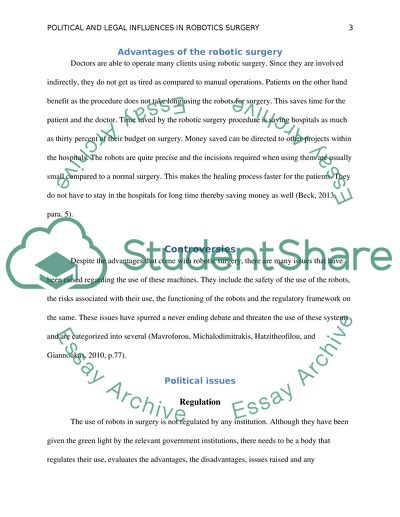Cite this document
(“Robotic Surgery Research Paper Example | Topics and Well Written Essays - 2500 words”, n.d.)
Retrieved from https://studentshare.org/law/1491527-robotic-surgery
Retrieved from https://studentshare.org/law/1491527-robotic-surgery
(Robotic Surgery Research Paper Example | Topics and Well Written Essays - 2500 Words)
https://studentshare.org/law/1491527-robotic-surgery.
https://studentshare.org/law/1491527-robotic-surgery.
“Robotic Surgery Research Paper Example | Topics and Well Written Essays - 2500 Words”, n.d. https://studentshare.org/law/1491527-robotic-surgery.


